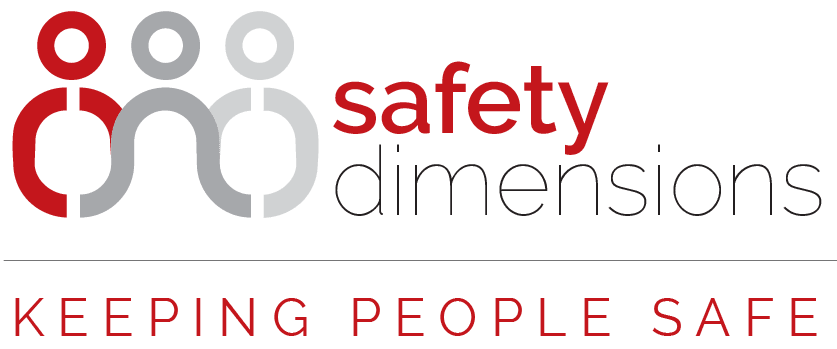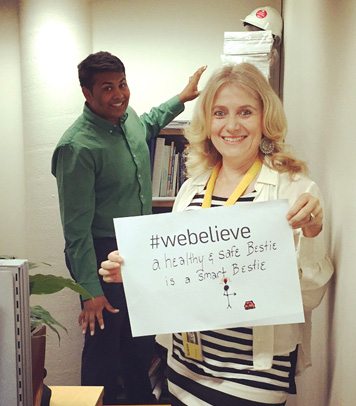
Have you undertaken a current risk assessment to identify the risks associated with exposure to COVID-19 in your workplace? Safe Work Australia has published a downloadable checklist you can follow with the key considerations for identifying risks and control measures.
Some of the considerations to include in your risk assessment include:
- What is the latest advice from the government and key industry and employee associations on control measures?
- What is the current advice from health authorities about the current situation and case numbers, public health orders and health directions for COVID-19 cases in the local community/region? Information on the latest number and location of COVID-19 cases (including in some cases heat maps) is available from your jurisdictional health authority here >>
- Does the nature of the work undertaken by my business increase the risk of my workers being exposed to COVID-19?
- Does my workplace have facilities for hand washing and/or hand sanitising?
- Does my workplace environment/set-up increase the risk of my workers and/or clients being exposed to COVID-19 and can this be changed?
- Do I have workers that fall within a vulnerable worker category?
- What are my current cleaning and disinfecting arrangements and are they consistent with guidance provided by Safe Work Australia?
- How prepared is my business if there is a case of COVID-19 in the workplace?
- What worker communication and support mechanisms are in place?
- Do the changes I plan to make to my business or changes arising from COVID-19 change the risk?
- Do I have a plan to review my control measures to ensure they are effective?
You can download detailed Key considerations for undertaking a risk assessment – COVID-19 from Safe Work Australia here https://www.safeworkaustralia.gov.au/doc/key-considerations-undertaking-risk-assessment-covid-19
Source: Safe Work Australia https://www.safeworkaustralia.gov.au
Ready to train your people in safety, risk management, hazard identification or subcontractor management?
We have a range of programs to train your people in risk management, hazard identification and subcontractor management which can be tailored specifically to your industry and organisational needs. Training can be delivered as individual modules or as part of one of our accredited programs.
BSB41419 Certificate IV in Work Health & Safety
The BSB41419 Certificate IV in Work Health and Safety is a nationally accredited program that will teach you how to identify hazards in the workplace, assist with responding to incidents, assess and control risk and consult on work health and safety issues. This program is most suited to those in a Safety Officer or Health and Safety Representatives role, or those currently in leadership roles wishing to shift their career into Health and Safety.
Risk Assessment & Hazard Identification
This program helps you identify and describe the difference between a hazard and a risk, and introduces a way of thinking about hazard identification and risk management as an everyday activity.
It will also enhance the skills and capabilities of leaders in the areas of hazard identification, risk analysis and identification and how to implement appropriate risk controls.
Contact us for a course outline >>
Subcontractor Management
Learn to effectively manage WHS site risks and performance by learning how to effectively select, manage and monitor the complex and difficult world of subcontractors. It also covers the WHS obligations regarding subcontractors, stepping through the various stages of effective subcontractor management, including assessing, evaluating safety history, attitude and managing expectations of performance and reporting.
Want to find out more about how we can customise our programs to your industry and organisation?
Let's talk!
Call us on 03 9510 0477, email info@ldn.com.au or use our contact form here.
From our blog
Looking Out For Our Besties – Susan McLennan from Best & Less
Looking Out For Our Besties - Best & Less In this interview with Best & Less National HSE Manager Susan McLennan we dive into the challenges of managing safety and leadership competency in a competitive major national retail environment. Background...
Worksafe – Homesafe: City of Gold Coast Joe McCabe Interview
Worksafe - Homesafe: Interview with City of Gold Coast's Joe McCabe City of Gold Coast is the second largest local government in Australia (based on estimated resident population) known for its beaches, hinterland ranges, forests, waterways and vibrant communities,...
Professor Patrick Hudson: Moving up the culture ladder (Video)
Professor Patrick Hudson: Moving up the culture ladder (Video) In this video from the Australian Work Health & Safety Strategy 2012-2022 Virtual Seminar Series, international expert, Professor Patrick Hudson, likens organisational culture to a game of snakes and...
CPB email for formidable
Dear [2583], Thanks for booking into the CPB 2-day nationally accredited Being At The Leading Edge (BATLE) program. The date and location you have selected is: [2710]. Please add this date to your calendar. You will receive program logistics closer to the start date....
What is the most dangerous time of the week on the roads?
What is the most dangerous time of the week on the roads? SMH recently published research by the Road Safety Unit of UNSW showing that the most dangerous time on NSW roads and across the nation is around 3pm on a Saturday. Monday has found to be the safest day....
Focus On Water: Seqwater Interview Joseph Meissner
Focus On Water: Seqwater Interview Joseph Meissner Creating a safe work environment for employees is a priority for Seqwater, aiming for a safety culture where all employees are responsible for safety and are empowered to make safer decisions. Safety Dimensions were...

